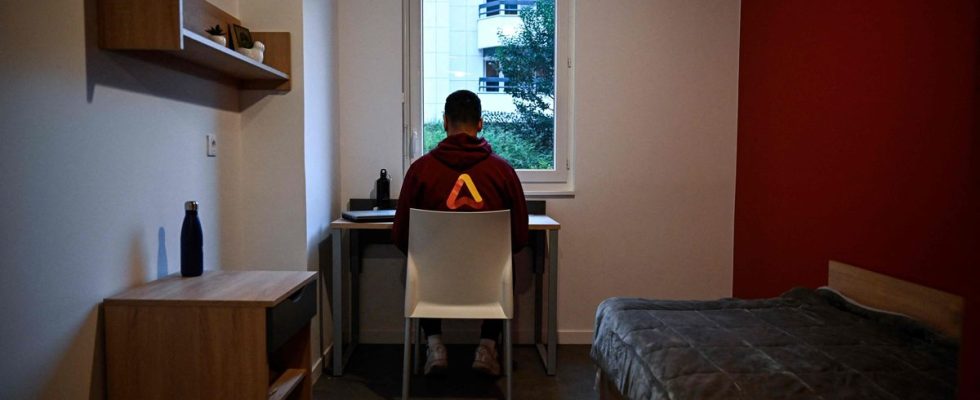Inflation strangles students, who are particularly precarious. Faced with the rising cost of living and tuition fees, they can no longer get by, despite their student loans. The amount borrowed at the start of their studies by many students is now insufficient to complete their studies in good conditions.
The student loan allows you to pay registration or everyday life costs. With a preferential rate – but which differs depending on the banks and the student’s profile – it is often repaid deferred, at the end of studies. Technically open to any major registered in higher education, this credit “concerns less than 10% of students in France, which is relatively low compared to other countries”, tempered Sébastien Grobon, economist attached to the Panthéon Sorbonne University.
More and more young people in the public concerned
The contrast is strong with the United States, where more than half of students are affected, or even Germany and Sweden. France presents a “greater aversion to student debt”, specifies the specialist in socio-economic inequalities in education, in particular because of “the tradition of low registration fees and scholarships”.
This is why the student loan “initially concerned more exceptional and more expensive training”, “in particular the private Grandes Écoles” and the “business schools”, explains the researcher. These training courses also promise “high salaries, which will facilitate reimbursement”. But recently, “more and more” young people who study in the public sector find themselves forced to contract one, says Éléonore Schmitt, of the union L’Union universitaire.
Fuzzy data
Despite much lower tuition fees, they have to borrow to finance their daily lives, especially since “the explosion of student precariousness” linked to Covid-19, she explains. Quantifying student debt in France is very difficult. No sector organization interviewed by AFP (FBF, Banque de France, ASF, ACPR) has precise data on the number and outstanding student loans.
In July 2021, a fact-finding mission from the Senate regretted that no structure was responsible for “aggregating this data on a national scale”, speaking of a “poorly understood phenomenon” which “deserves to be better documented”. The banks are very discreet, mainly communicating the figures for student loans guaranteed by the State, a system which allows those under 28 to borrow up to 20,000 euros without deposit or guarantor, since it is the Bank public investment company (Bpifrance) which plays this role.
The “dynamism” of the student loan
Only BPCE was completely transparent with the AFP, indicating that it had noted “very strong dynamism in student credit” in its Banque Populaire and Caisse d’Epargne banks in 2022, with a jump in the number of loans (70,800, +9.5%) and amounts borrowed (226 million euros at Banque Populaire, +21%, and 985 million euros for the entire group, as specified on Monday by BPCE).
Questioned by AFP, BNP Paribas and Société Générale indicated that they had noted in 2022 “a slight drop in the number of student loans”. However, “the total amount granted has increased”, specifies Société Générale. The increase in borrowed amounts is not solely due to the increase in the cost of daily living. It is also explained by the increase in already high registration fees for private schools, a favorite hunting ground for banks.
The vicious circle of borrowing
At Sciences Po, where five banks are setting up their stand during the integration period, tuition fees – determined according to parents’ income (up to 19,670 euros per year) – have all increased by 7.5% this year, because of inflation. Although BNP Paribas has not yet observed “a significant increase” in these requests, this year it has nevertheless opened the possibility of “taking out an additional student loan”, she clarified.
“It’s a bit of a vicious circle: we no longer have enough money and on top of that we will have to borrow at less advantageous rates. Not all students can handle that,” warns Geoffroy Brocart, student. In fact, the interest rates on student loans have increased in a year and a half from less than 1% on average to more than 2%, indicated Maël Bernier, spokesperson for Meilleurtaux brokers. A level certainly much more advantageous than the current rates of other credits but synonymous with a repayment which remains heavy to assume for many young workers starting their professional life.

